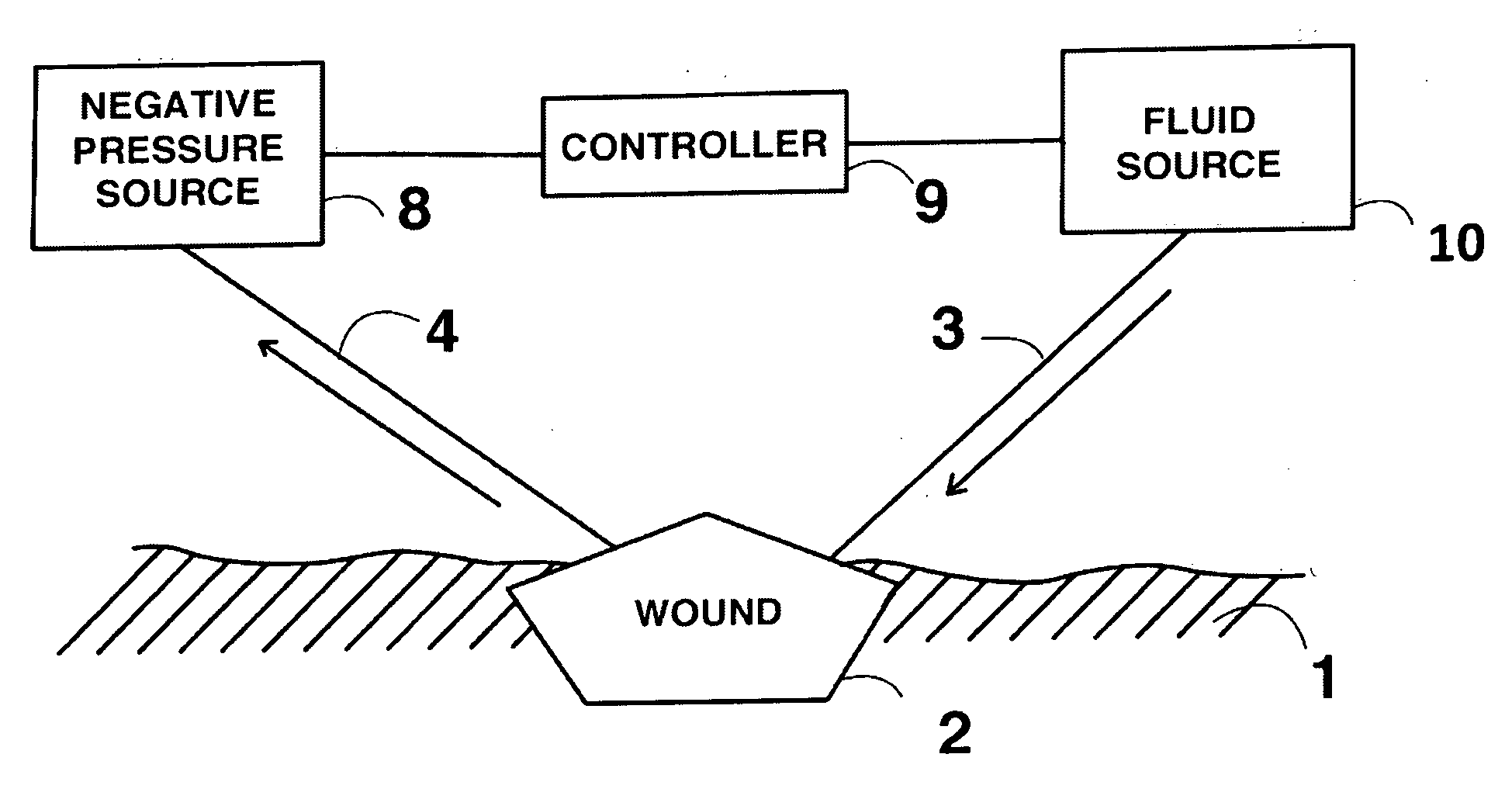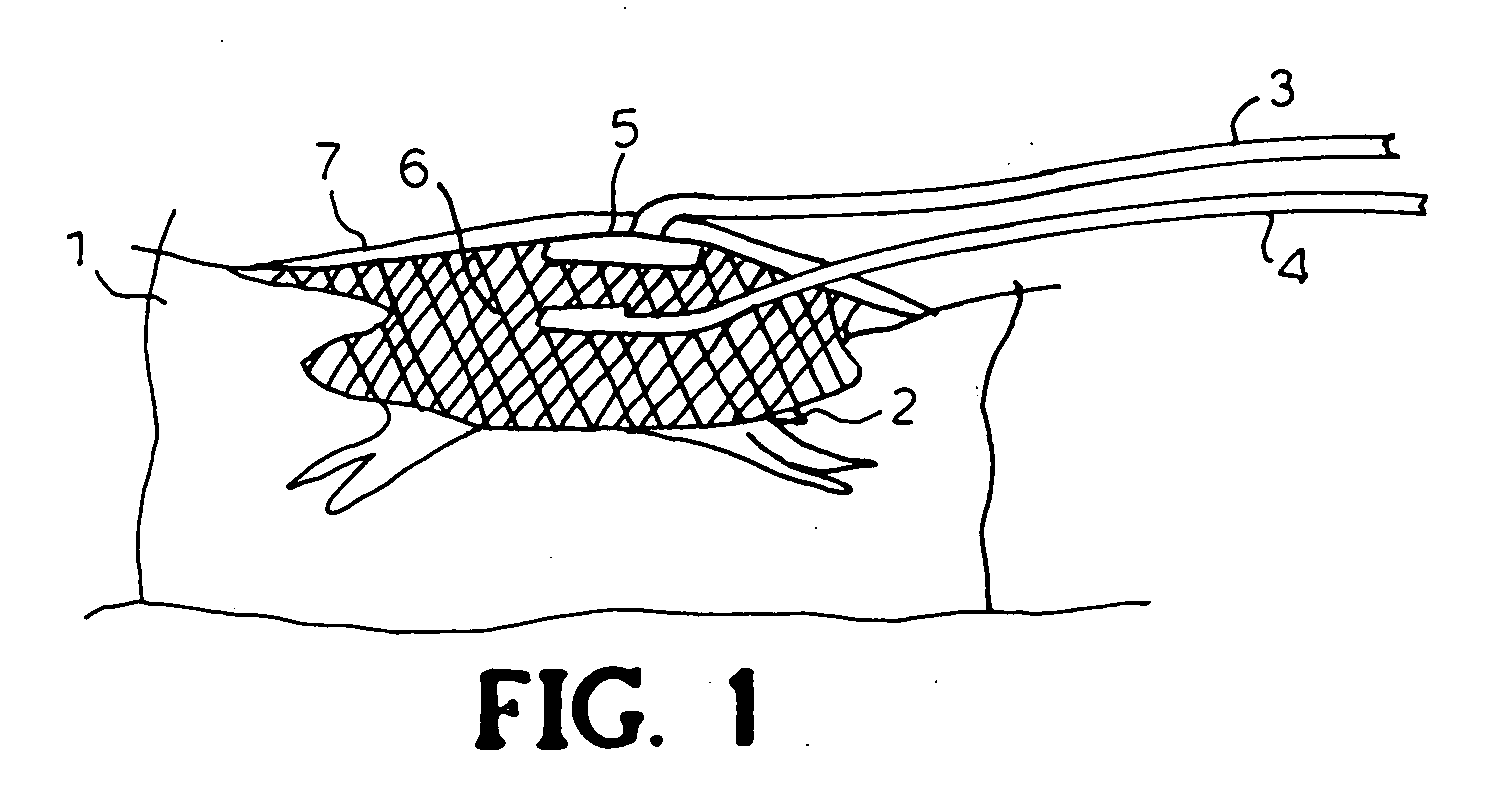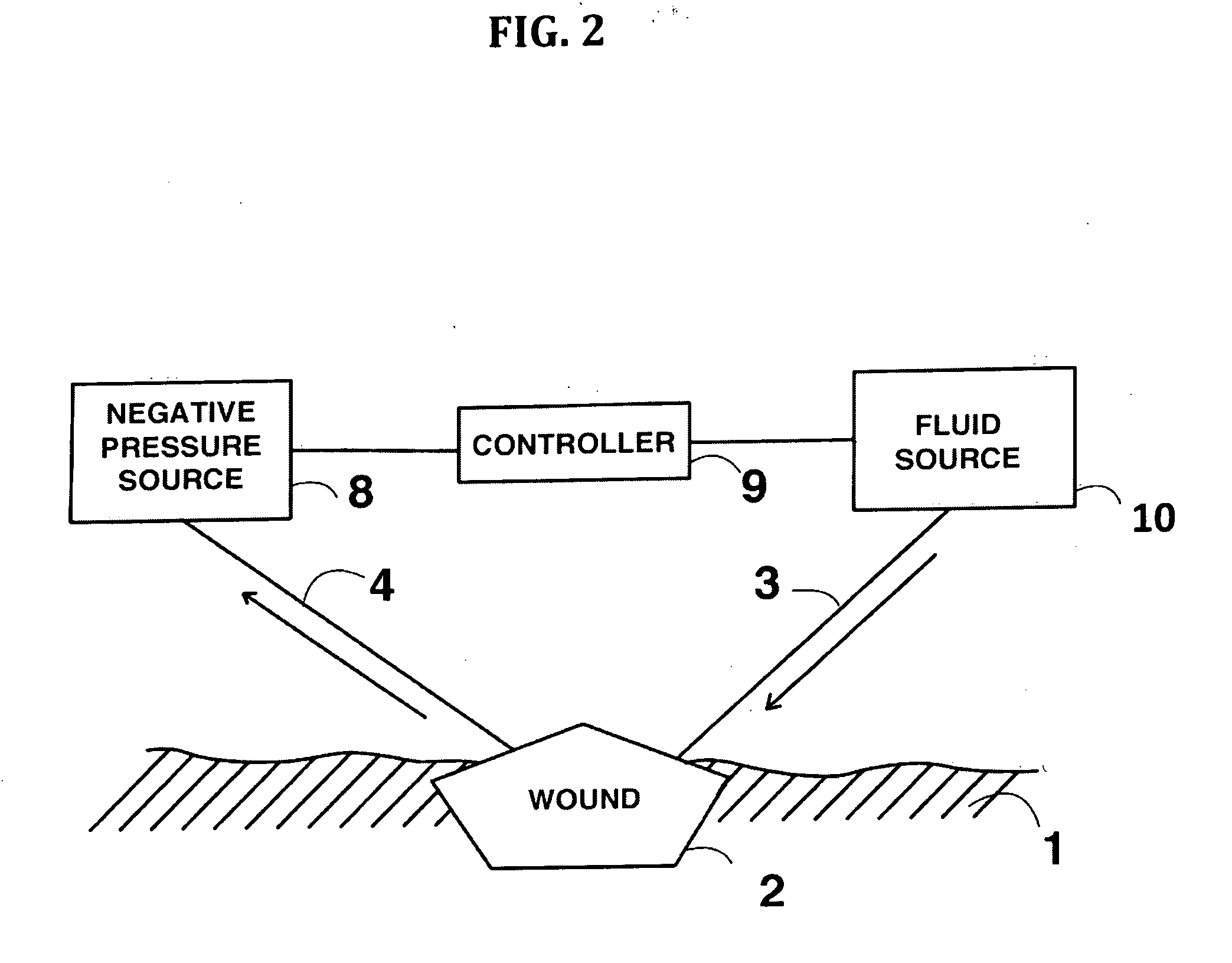Method for dressing a wound
a wound and wound technology, applied in the field of wound dressing methods, can solve the problems of high tissue counts of microorganisms, delayed wound healing, tissue damage, etc., and achieve the effect of enhancing wound healing and reducing the number of pathogenic microorganisms
- Summary
- Abstract
- Description
- Claims
- Application Information
AI Technical Summary
Benefits of technology
Problems solved by technology
Method used
Image
Examples
example 1
Manufacture of Wound Dressing Product
[0044]In this example, a standard wound dressing is manufactured based on the invention in the following manner:
Materials: (From Inside-Out)
[0045]
COMMERCIALLAYERPRODUCT NAMEMANUFACTURER1. Hydrophobic layerGreen Cellulose AcetateABIGO Medical ABwoven prepared accordingSwedento U.S. Pat. No. 4,617,3262. Optional AdhesiveNational 505ENational Starch &Chemical Ltd.,United Kingdom3. Optional Absorbent(Airlaid) ConcertConcert GmbH, materialMH080.104.P000Falkenhagen,Germany
[0046]A. The hydrophobic layer is preferably produced according to U.S. Pat. No. 4,617,326 by applying to a cellulose acetate fabric an amount of dioctadecyl carbamoyl chloride DACC or AKD as disclosed in this patent making a covalent bond between the materials. The acetate fabric is on rolls of 50 m length and at a width of 1 m, and taken as such to the next step.
[0047]B. The optional bonding of the hydrophobic layer with the absorbent layer is made in a machine for the purpose, ha...
example 2
Use of the New Dressing Product to Bind Pathogens in a Liquid Drench Without Applying Vacuum
[0052]Material: Wound dressing as described in Example 1[0053]Bacterial strains: Staphylococcus aureus Newman, Pseudomonas aeruginosa 510, Enterococcus faecalis, Candida albicans
[0054]Isolates were cultured on agar with 5% horse erythrocytes in 5% CO2 atmosphere at 37° C. Suspensions were made in phosphate-buffered saline (PBS, 0.02 M sodium phosphate and 0.15 M sodium chloride, pH 7.2) at 109 bacterial cells / ml, 107 fungal cells / ml or indicated concentration.
[0055]The dressing was cut in 1 cm2 pieces. Incubation was made in 24 well polymer plates. 1 ml of suspension was added to each dressing. The plates were placed on a rotary shaker at very low speed. Incubation was performed at room temperature for the indicated time. After incubation, dressings were rinsed in PBS several times, and then put in 2.5% TCA (tricarboxylic acid).
[0056]The ATP content was measured in a luminometer (LKB Wallac)...
example 3
Test of the New Dressing on a Rough Surface Without Applying Vacuum
[0061]A standardized pig wound model is used (BMC Surg. 2008; 8: 5. Hirsch et al; Enhanced susceptibility to infections in a diabetic wound healing model) and the experimental protocol of Example 2. The maximal adsorption to the Sorbact is measured after 2 hours. When 109 cells of S. aureus are added, 106 cells adhere, for P. aeruginosa 105 cells adhere out of 109.5, and for E. faecalis 1×105 cells out of 5×1010 adhere. For C. albicans, 103 cells adhere out of 107 added.
PUM
 Login to View More
Login to View More Abstract
Description
Claims
Application Information
 Login to View More
Login to View More - R&D
- Intellectual Property
- Life Sciences
- Materials
- Tech Scout
- Unparalleled Data Quality
- Higher Quality Content
- 60% Fewer Hallucinations
Browse by: Latest US Patents, China's latest patents, Technical Efficacy Thesaurus, Application Domain, Technology Topic, Popular Technical Reports.
© 2025 PatSnap. All rights reserved.Legal|Privacy policy|Modern Slavery Act Transparency Statement|Sitemap|About US| Contact US: help@patsnap.com



